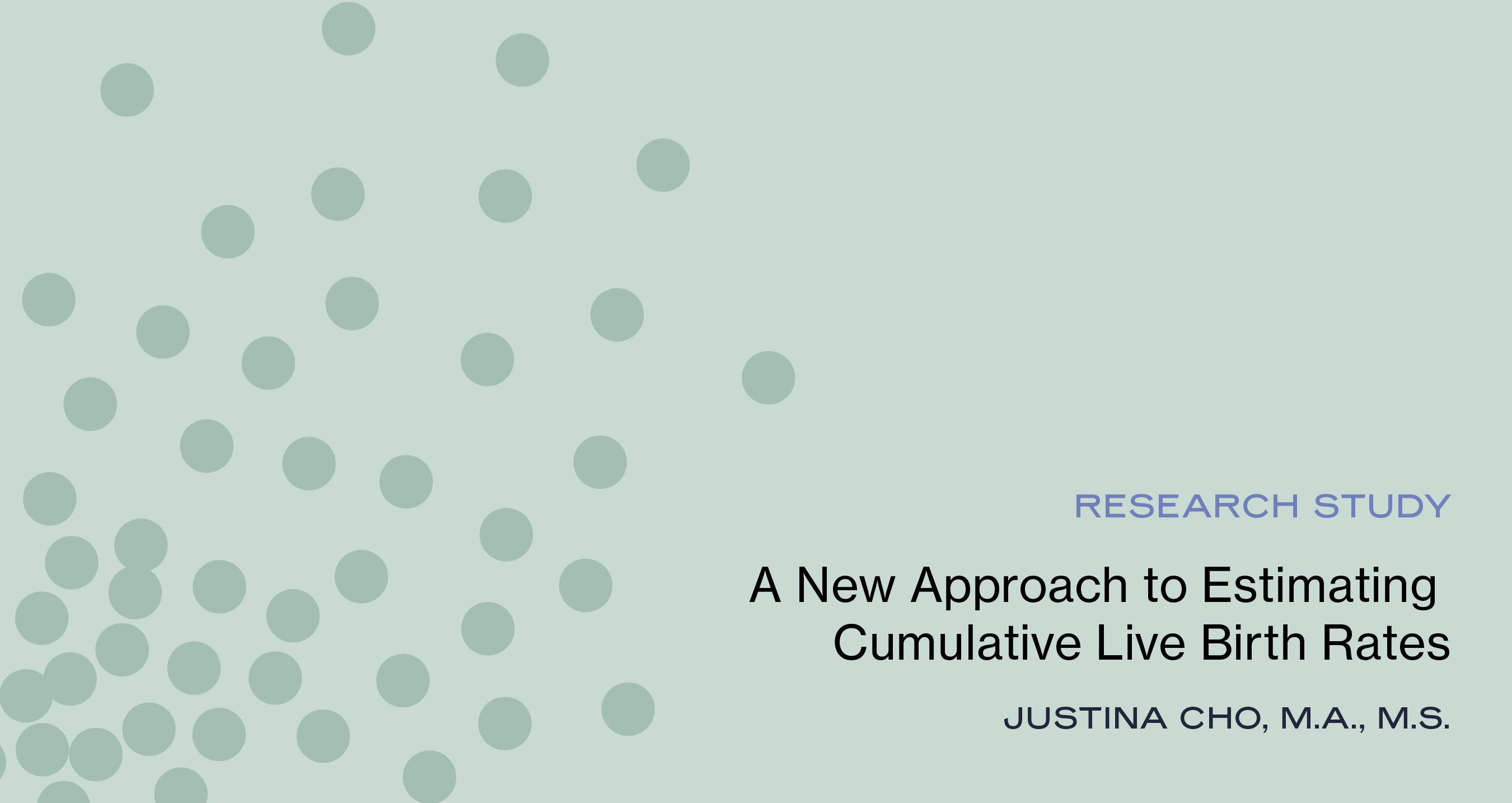How Can IVF Success Rate Predictions Be Improved Through Data?

Alife Data Scientist Justina Cho M.S., M.S. presented her research “A new approach to estimating cumulative live birth rates using predicted outcomes of all embryos” at the 2022 American Society for Reproductive Medicine conference this October. The conference is a yearly opportunity for reproductive scientists and care providers to discuss and discover the latest advances in reproductive medicine.
We had a chance to chat with Justina about why it’s important to be able to estimate the cumulative live birth rate during IVF, and how IVF success rate predictions can be improved through data.
To dive deeper into learning about IVF, check out our blog!
Interview with Alife Data Scientist Justina Cho, M.A., M.S.:
What is a cumulative live birth rate?
Cumulative live birth rate (CLBR) is a measure of a patient’s success with IVF. It is defined as the chance of at least one live birth following the transfer of all embryos from a single egg retrieval cycle. If a patient has a cumulative live birth rate of 68%, this means that the patient has a 68% chance of a live birth following one retrieval cycle.
How did your approach to estimating the cumulative live birth rate compare to other methods?
We found that other success predictors only take into account the outcomes of transferred embryos, which means they don’t account for embryos that remain frozen. For many patients this means that their true chance of success may be underestimated. In our model, we utilized a stepwise-approach to estimating CLBR. The stepwise-approach is as follows: first, we predicted the number of blastocysts a patient might have, and then we predicted the birth rate potential for each of those blastocysts. Together, this gives us an estimate of the CLBR.
Why does it matter to be able to accurately estimate what the cumulative live birth rate will be?
With better estimates of cumulative live birth rate, patients will have a better idea of their chances of success during IVF. Because current success estimators do not account for untransferred embryos, they may be underpredicting success for patients with a higher prognosis.
What data did you use in your study and why was this good data to use?
For this study, we used the Society for Assisted Reproductive Technology Clinical Outcome Reporting System (SART CORS) data. This database is composed of data from more than 90% of clinics providing assisted reproductive technology in the USA. This data is particularly good because our models have learned from a large number of different patients from diverse backgrounds. Thus, we are able to make more confident predictions for a variety of patient types.
What did you learn through your research?
It turns out that our model gives very similar predictions to other online predictors for many patients. But for better prognosis patients, who are more likely to have a surplus of frozen embryos, our model predicts a slightly higher chance of success.
Recent Articles
Share this
Recent Articles

Learn everything you need to know about IVF
Join the newsletter for IVF education, updates on new research, and early access to Alife products.



